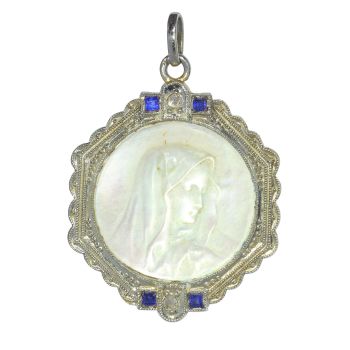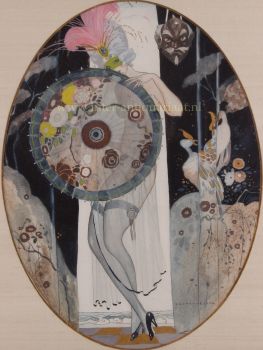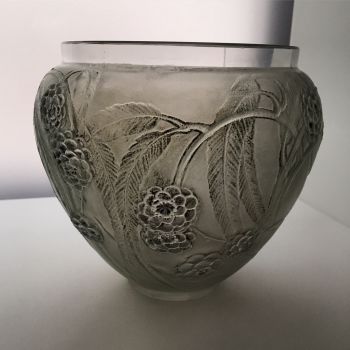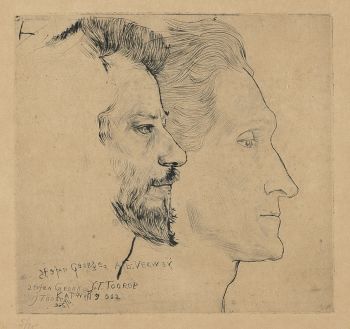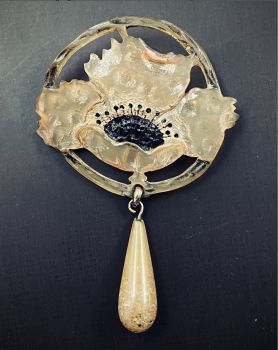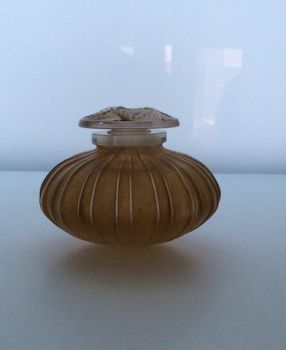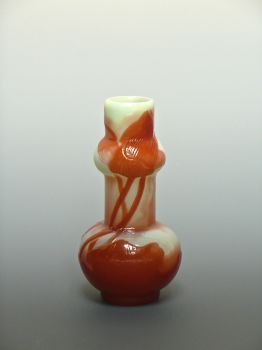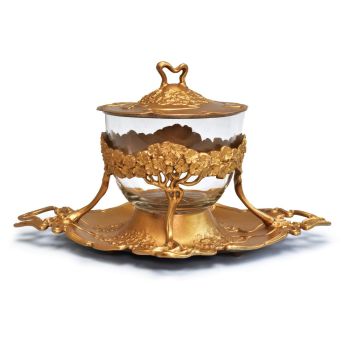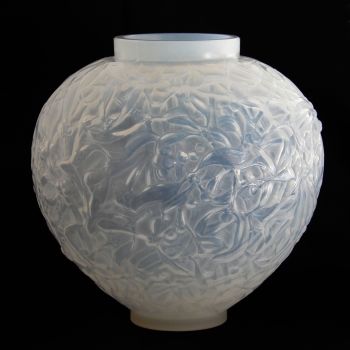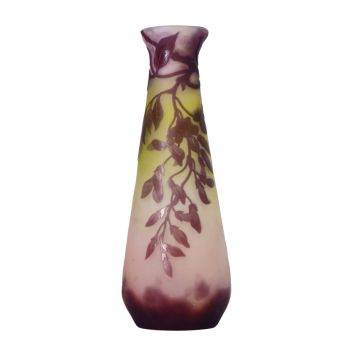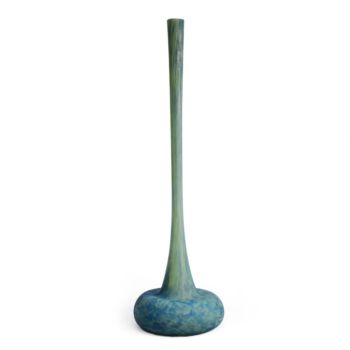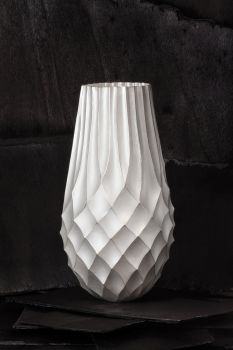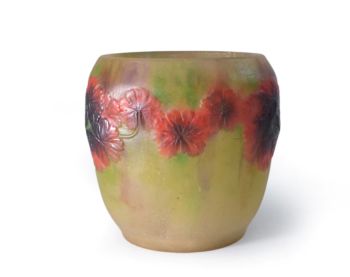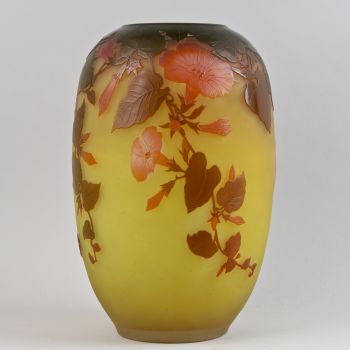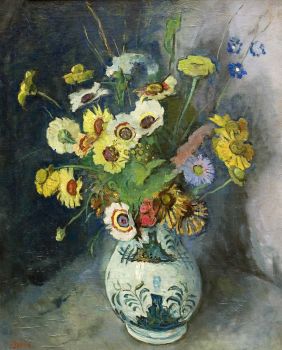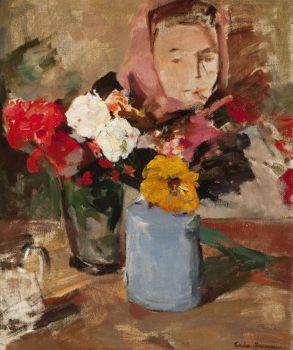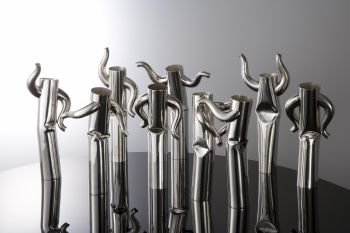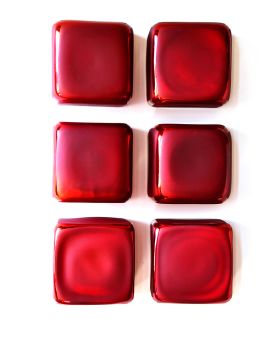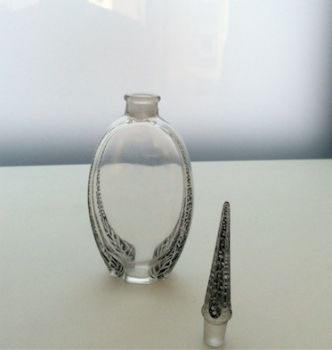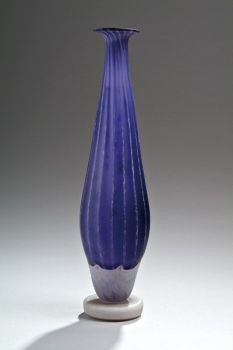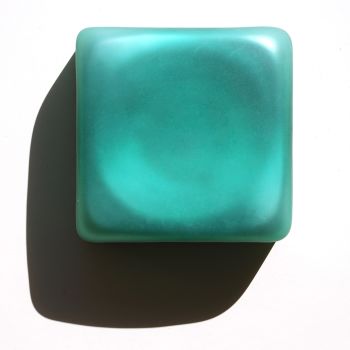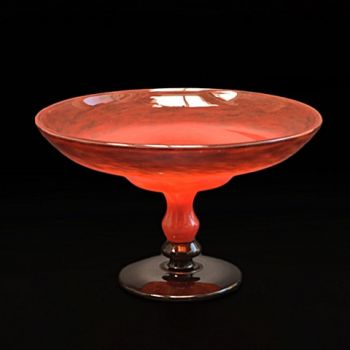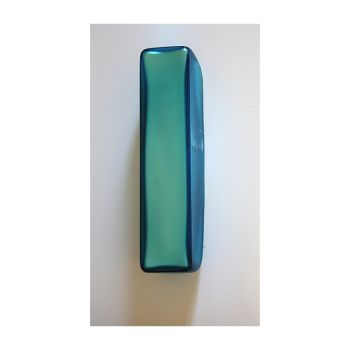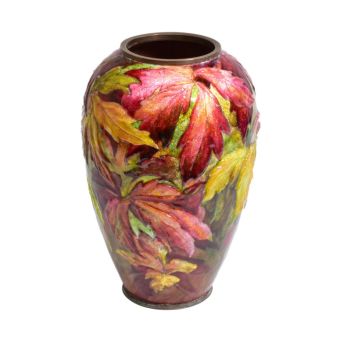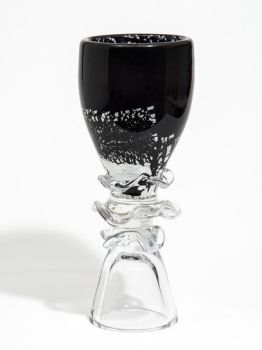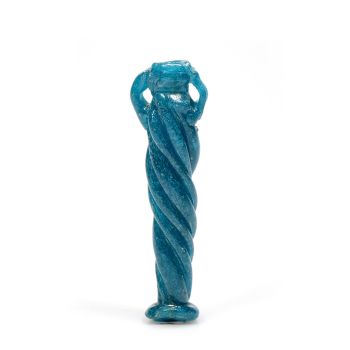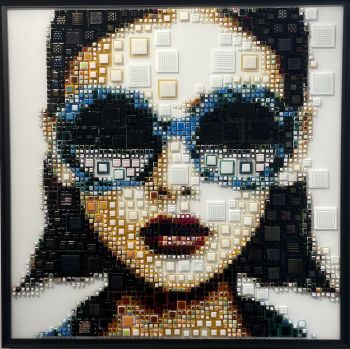François-Théodore Legras – Tall “Fleurs de Pommier” apple blossoms vase 1900 - 1909
Artista Desconhecido
CopoCamafeu
41 cm, ø 12 cm
ConditionMint
Preço em pedido
Antiques Emporium
- Sobre arteFrançois-Théodore Legras was a celebrated French glassmaker renowned for his significant contributions to the Art Nouveau movement. Born in 1839 in the Vosges region, Legras rose to prominence in the late 19th and early 20th centuries, becoming a key figure in the world of decorative arts. His work is characterized by its intricate designs, innovative techniques, and a profound appreciation for nature, all of which resonate strongly in his glass creations.
One of Legras’s most exquisite and refined works is the series “Fleurs de pommier,” which translates to “Apple Blossoms.” This series is widely regarded as his masterpiece, encapsulating the essence of the Art Nouveau style with its fluid forms and organic motifs. The vases in this series reflect a profound Japanese influence, which was a significant source of inspiration for many Art Nouveau artists. This cross-cultural artistic exchange is evident in the delicate, nature-inspired themes and the exceptional attention to detail.
The “Fleurs de pommier” vase, in particular, is a stunning representation of Legras’s artistry and technical skill. The glass of the vase is imbued with breathtaking colors that evoke the serene beauty of an early spring morning. The subtle hues blend seamlessly, creating a visual symphony that brings to life the freshness and vitality of apple blossoms in full bloom. This vibrant yet gentle color palette enhances the overall sense of elegance and refinement.
What truly sets this vase apart are the intricate details of the apple blossom branches, leaves, and flowers, meticulously rendered with multicolor enamel paint. Each element is crafted with great finesse, showcasing Legras’s mastery in manipulating glass and enamel to achieve such lifelike representations. The branches twist and turn gracefully, the leaves are rendered with a delicate touch, and the blossoms themselves appear almost tangible, as if ready to be plucked.
Adding to the vase’s allure is the signature “Legras” inscribed on its lower side, a mark of authenticity and craftsmanship. Additionally, an original label from the reseller “Bronzes d’art Oudir, Marseille” is applied over an older label, creating an intriguing mystery about what lies beneath. This hidden label adds an element of historical curiosity and depth to the vase’s provenance, sparking the imagination about its journey through time and ownership.
This vase is not just a piece of decorative art; it is a celebration of nature’s ephemeral beauty, frozen in time. It embodies the spirit of Art Nouveau, with its emphasis on natural forms, intricate details, and harmonious design. Legras’s “Fleurs de pommier” vase is a testament to his vision and craftsmanship, making it a cherished piece for collectors and art enthusiasts alike.
In conclusion, François-Théodore Legras’s “Fleurs de pommier” series stands as a pinnacle of his career, exemplifying the most beautiful and refined work he ever produced. The strong Japanese influence, combined with the hallmarks of Art Nouveau and the exquisite execution in multicolor enamel paint, makes this vase a remarkable tribute to the beauty of nature and the skill of its creator. The signature and the mysterious labels add further layers of intrigue and authenticity, enhancing its value and appeal.
Dimensions:
Height: 415mm / 16.34”
Diameter opening: 40mm / 1.57”
Diameter top: 57mm / 2.24”
Diameter base: 125mm / 4.92″
Weight: 1,35 kg / 2.21 lb
Condition: Mint
Provenance: A French lady collection
Literature:
Michel, Fouchet & Vitrat – Legras Verrier – Page 162. - Sobre artista
Pode acontecer que um artista ou criador seja desconhecido.
Algumas obras não devem ser determinadas por quem são feitas ou são feitas por (um grupo de) artesãos. Exemplos são estátuas dos tempos antigos, móveis, espelhos ou assinaturas que não são claras ou legíveis, mas também algumas obras não são assinadas.
Além disso, você pode encontrar a seguinte descrição:
•"Atribuído a …." Na opinião deles, provavelmente uma obra do artista, pelo menos em parte
• “Estúdio de…” ou “Oficina de” Em sua opinião um trabalho executado no estúdio ou oficina do artista, possivelmente sob sua supervisão
• "Círculo de ..." Na opinião deles, uma obra da época do artista mostrando sua influência, intimamente associada ao artista, mas não necessariamente seu aluno
•“Estilo de…” ou “Seguidor de…” Na opinião deles, um trabalho executado no estilo do artista, mas não necessariamente por um aluno; pode ser contemporâneo ou quase contemporâneo
• "Maneira de ..." Na opinião deles, uma obra no estilo do artista, mas de data posterior
•"Depois …." Na opinião deles uma cópia (de qualquer data) de uma obra do artista
• “Assinado…”, “Datado…” ou “Inscrito” Na opinião deles, a obra foi assinada/datada/inscrita pelo artista. A adição de um ponto de interrogação indica um elemento de dúvida
• "Com assinatura ….”, “Com data ….”, “Com inscrição ….” ou “Tem assinatura/data/inscrição” na opinião deles a assinatura/data/inscrição foi adicionada por outra pessoa que não o artista
Você está interessado em comprar esta obra de arte?
Artwork details
Related artworks
Artista Desconhecido
A pair of angels Antwerp, 17th century, Carrara marble17th century
Preço em pedidoFrederik Muller
Artista Desconhecido
Copo de beber Cristallo façon de Venise1600 - 1650
Preço em pedidoPeter Korf de Gidts - Antiquairs
1 - 4 / 12- 1 - 4 / 24
Amalric Walter
Amalric Walter & Henri Bergé – Crabe plumier1920 - 1929
Preço em pedidoAntiques Emporium
Frères Daum
Daum Nancy – “Paysage Soleil Couchant” vase with two applied handles1900 - 1910
Preço em pedidoAntiques Emporium
1 - 4 / 24- 1 - 4 / 24
Amalric Walter
Amalric Walter & Henri Bergé – Crabe plumier1920 - 1929
Preço em pedidoAntiques Emporium
1 - 4 / 24Johann Loetz (Lötz) Witwe Klostermühle
Johann Loetz Witwe - Phänomen Genre 7773 – Orange1900 - 1910
Preço em pedidoAntiques Emporium
Amalric Walter
Amalric Walter & Henri Bergé – Crabe plumier1920 - 1929
Preço em pedidoAntiques Emporium
Frères Daum
Daum Nancy – “Paysage Soleil Couchant” vase with two applied handles1900 - 1910
Preço em pedidoAntiques Emporium
1 - 4 / 12

















